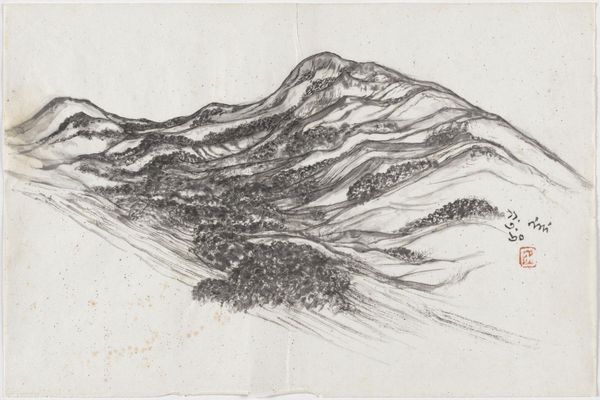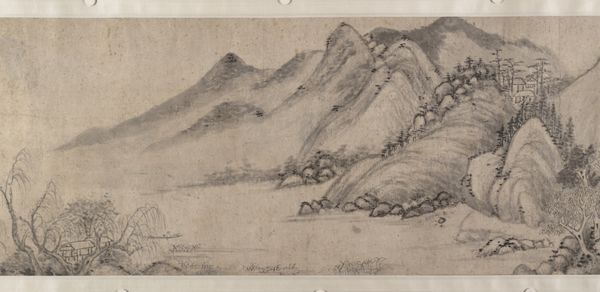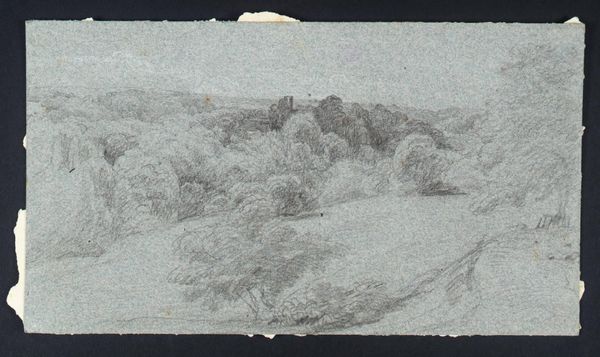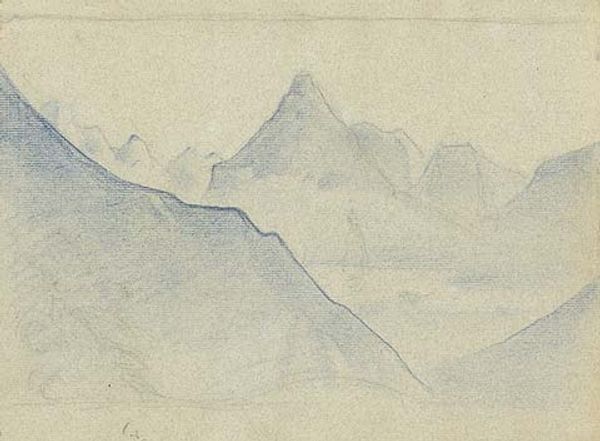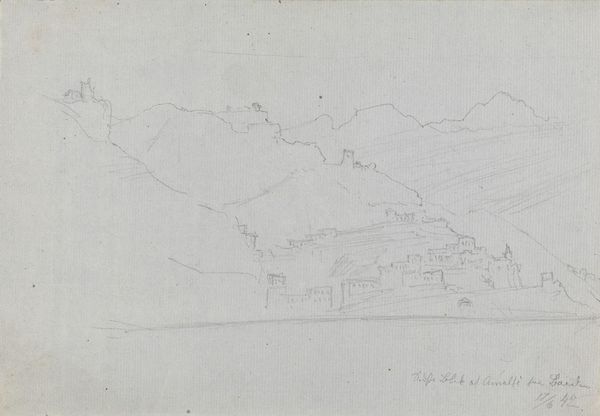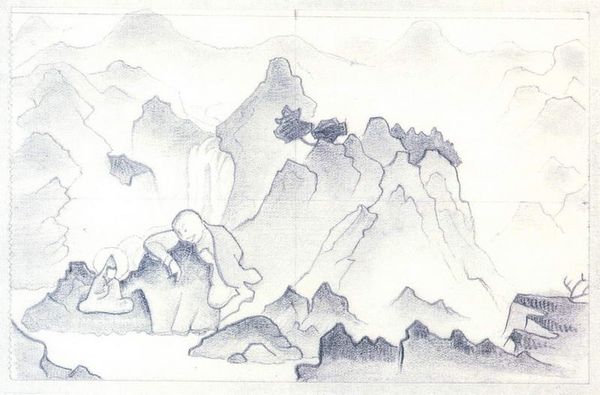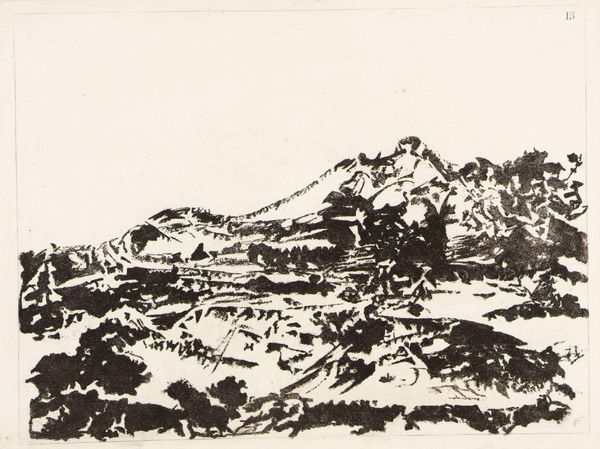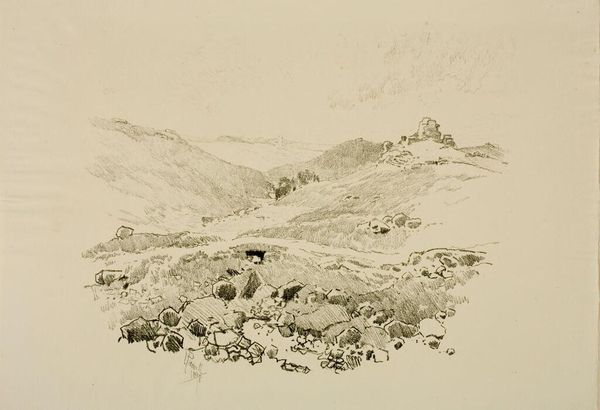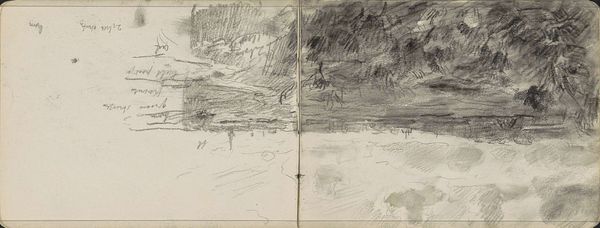
paper, watercolor, ink
#
water colours
#
asian-art
#
landscape
#
paper
#
watercolor
#
ink
#
mountain
#
orientalism
#
line
#
watercolor
Dimensions: Image: 26 x 9 1/8 in. (66 x 23.2 cm) Overall with mounting: 43 5/8 x 28 3/4 in. (110.8 x 73 cm) Overall with rollers: 32 1/2 in. (82.6 cm)
Copyright: Public Domain
Editor: This is "View of the Kamo River from Sanbogi at Dawn," created in 1829, attributed to Oda Kaisen. It’s a watercolor and ink on paper landscape. I'm really struck by the mistiness, this feeling of quiet contemplation. What resonates with you most when you look at this? Curator: That mist, it's everything, isn't it? It dissolves the world into a dream, almost a memory. Look at how the mountains emerge, ghost-like. Kaisen wasn't just painting a place; he was painting a feeling, a specific moment, that fragile beauty of dawn when the world is holding its breath. It reminds me of early mornings, before anyone else is awake, and you feel this strange, almost spiritual connection to the landscape. Editor: I see that. So, the haziness emphasizes a feeling instead of precise depiction. What about the composition, how does that support this feeling? Curator: The composition guides your eye, doesn't it? It pulls you from the foreground with the reeds and the little hut toward the distant mountains. There’s a sense of journey, both physical and perhaps spiritual. The blank space, the emptiness, is just as important as the drawn elements. It's like a pause in music, creating a sense of anticipation. Think about the ink. The washes, the stark blacks juxtaposed with airy grays, it's almost musical. It’s not a photorealistic recreation, but an emotional echo of a landscape. Kaisen invites us to be present in that moment. Editor: That makes a lot of sense. The emptiness highlights the intentional marks that are present. I appreciate how much this work relies on the viewer to complete it. Curator: Precisely! Art isn’t about the artist just pouring out information, it’s also an invitation for viewers to engage their emotions and finish the artistic experience by relating it to their feelings and memory. We each paint in the space. Editor: This has changed my perspective on it entirely. I now recognize Kaisen wasn’t creating scenery, but space for interpretation and emotional resonance. Curator: It has allowed me to ponder on how Kaisen, uses minimalism as a strength, as a doorway, creating space that whispers rather than shouts.
Comments
No comments
Be the first to comment and join the conversation on the ultimate creative platform.
